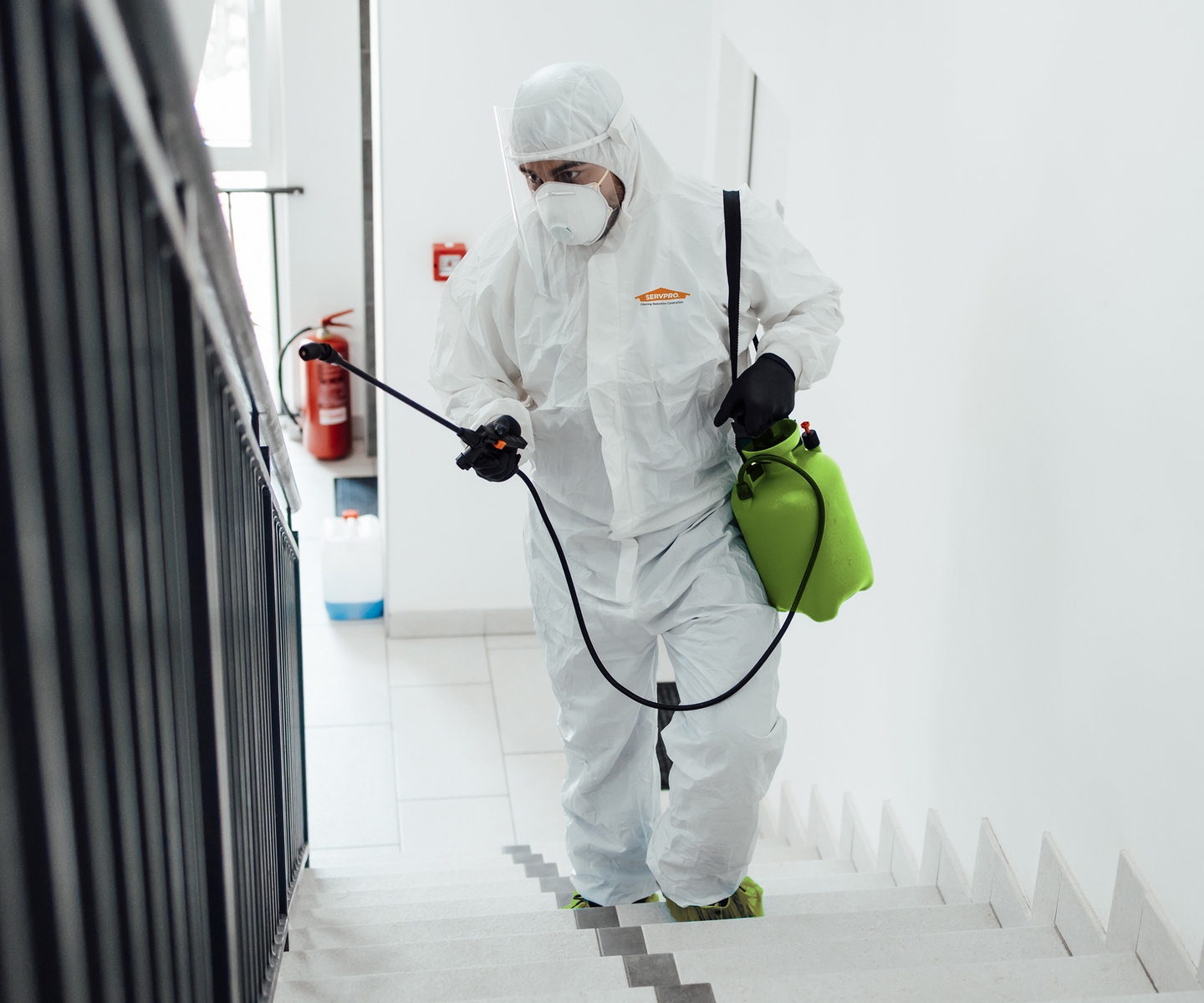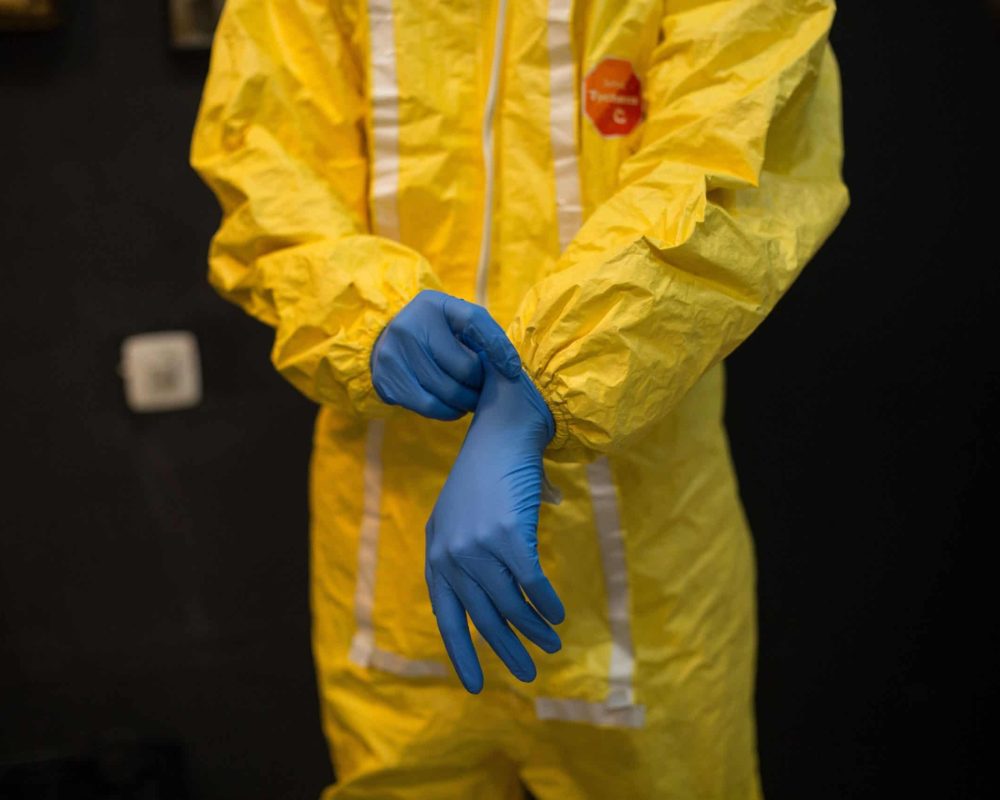Hoarder Cleanup Services: Improving Order and Safety in Your Home
Hoarder Cleanup Services: Improving Order and Safety in Your Home
Blog Article
Expert Biohazard Cleaning and Purification for Blood, Bodily Fluids, and Hazardous Materials
The potential wellness dangers connected with direct exposure to biohazards highlight the essential demand for thorough handling and extensive cleaning. As we browse the detailed landscape of biohazard cleaning, recognizing the subtleties of guidelines, conformity, and the specific devices at play becomes important in guaranteeing a comprehensive and safe purification procedure.
Health And Wellness Risks of Biohazard Exposure
Direct exposure to biohazards presents substantial health and wellness risks that can result in severe consequences for individuals and areas alike. Biohazards incorporate a large range of biological materials, including blood, bodily liquids, mold, bacteria, infections, and other possibly contagious materials. When people come into call with these biohazards, whether with accidents, inappropriate handling, or environmental direct exposure, they deal with the risk of having serious ailments or illness.
One of the main health threats related to biohazard exposure is the transmission of transmittable diseases. Bloodborne virus such as HIV, hepatitis B and C, and numerous microorganisms can be present in biohazardous products, positioning a straight threat to human wellness. Inhaling airborne biohazards like mold spores or entering into call with polluted surface areas can likewise lead to breathing issues, allergic reactions, and various other unfavorable wellness effects.
Moreover, biohazard exposure can have long-term health and wellness implications, with some conditions manifesting years after the preliminary call (Blood Cleanup). For that reason, it is critical to prioritize correct biohazard cleaning and decontamination to minimize these health dangers and make certain the safety of individuals and areas

Specialized Training for Biohazard Cleaning
When it comes to handling biohazard cleanup efficiently and safely, specialized training plays an essential duty in ensuring proper decontamination procedures are followed. Biohazard clean-up needs certain understanding and abilities to efficiently reduce dangers related to bloodborne virus, bodily liquids, and hazardous materials. Professionals learnt biohazard clean-up undertake strenuous guideline on how to safely deal with, remove, and get rid of biohazardous materials to avoid contamination and exposure.
Specialized training for biohazard cleanup covers a range of important subjects, consisting of proper individual protective devices (PPE) usage, bloodborne microorganism awareness, purification methods, and contaminated materials disposal methods. Individuals educated in biohazard clean-up are equipped with the needed know-how to examine contamination levels, determine potential dangers, and implement proper cleanup treatments in compliance with regulative criteria.
Constant training and education and learning are critical in the area of biohazard cleanup to remain upgraded on the newest purification technologies, security procedures, and policies. By purchasing specialized training, biohazard cleanup experts can properly respond to emergency cleaning situations and protect both public wellness and the environment.
Value of Correct Decontamination Methods
Using appropriate decontamination strategies is crucial in biohazard clean-up to successfully decrease and eliminate hazardous materials health and wellness threats. Reliable decontamination not only guarantees the elimination of noticeable traces of blood, physical liquids, and various other biohazards but also targets unnoticeable microorganisms that might posture serious health threats if not correctly gotten rid of. By adhering to rigorous purification methods, educated specialists can significantly reduce the risk of exposure to dangerous microorganisms, viruses, and bacteria that could lead to infections or diseases.
Proper purification strategies entail making use of customized tools and anti-bacterials that are especially made to reduce the effects of biohazards successfully. Complete cleansing and sanitation of polluted areas are necessary to prevent the spread of pathogens and ensure a secure setting for passengers. Furthermore, the right disposal of biohazardous waste complying with decontamination procedures is vital in preventing contamination of other surface areas or people.

Devices and Tools for Safe Cleaning
When dealing with blood, physical fluids, or hazardous products, biohazard cleaning professionals rely on specialized equipment to decrease direct exposure risks and thoroughly decontaminate the affected area. Additionally, biohazard cleaning kits containing disinfectants, absorbent products, and biohazard bags are made use of to securely get rid of and include of polluted items.
Advanced cleaning devices like hospital-grade anti-bacterials, HEPA-filtered vacuum cleaners, and misting devices are flood damage restoration employed to sanitize surface areas and get rid of biohazards properly. Specialized tools such as sharps containers and biohazard garbage disposal bins are utilized to securely handle sharp items and biohazardous waste materials. By making use of the ideal devices and tools, biohazard cleansing experts can make sure a detailed cleaning process that prioritizes security and reduces health threats for both workers and occupants of the damaged area.
Regulations and Conformity in Biohazard Cleaning
Correct adherence to guidelines and compliance criteria is vital in biohazard cleaning to make certain the security of both personnel and the setting. Government firms such as OSHA (Occupational Security and Health Administration) and the EPA (Environmental Protection Firm) have developed specific standards for biohazard cleanup treatments to minimize health and wellness risks and ecological contamination. These regulations cover a variety of aspects consisting of the handling, transport, and disposal of biohazardous materials, along with the required training and safety equipment needed for personnel associated with the cleaning process.
Biohazard cleansing companies need to remain up-to-date with these guidelines to guarantee that their operations fulfill the required security standards. Failure to abide by these regulations can result in extreme consequences, including fines, lawsuit, and threatening the wellness of people and the environment. By complying with rigid regulations and conformity measures, biohazard cleaning business can effectively reduce dangers and make certain a safe and comprehensive clean-up procedure for all events included.
Verdict
To conclude, biohazard cleaning and decontamination call for specialized training, correct techniques, and adherence to policies. Direct exposure to blood, bodily liquids, and harmful materials postures significant health risks, making it critical to use the ideal tools and devices for safe cleanup. By following rigorous methods and standards, specialists can properly minimize the risks connected with biohazard exposure and guarantee the safety of both themselves and others.
As we browse the detailed landscape of biohazard cleaning, comprehending the nuances of regulations, conformity, and the specific equipment at play becomes crucial in making sure a risk-free and comprehensive purification process. (Blood Cleanup)
When it comes to taking care of biohazard clean-up efficiently and securely, specialized training plays an essential role in making certain appropriate decontamination treatments are complied with.Making use of appropriate decontamination methods is important in biohazard cleanup to successfully lessen and eliminate harmful materials wellness risks. In addition, biohazard cleaning packages including anti-bacterials, absorbent products, and biohazard bags are used to safely get rid of and include of infected items.
Federal government firms such as OSHA (Occupational Security and Wellness Administration) and the EPA (Environmental Security Agency) have developed specific guidelines for biohazard cleaning treatments to lessen health dangers and ecological contamination.
Report this page